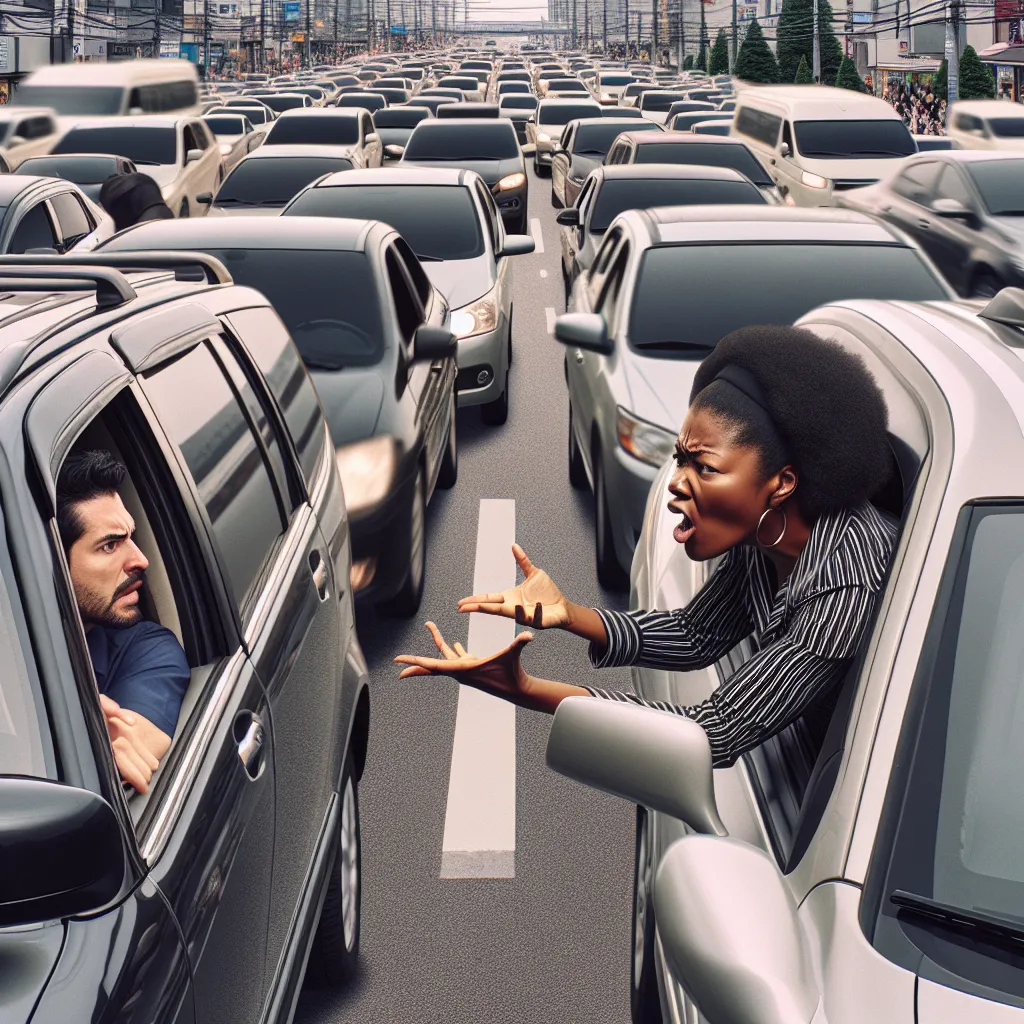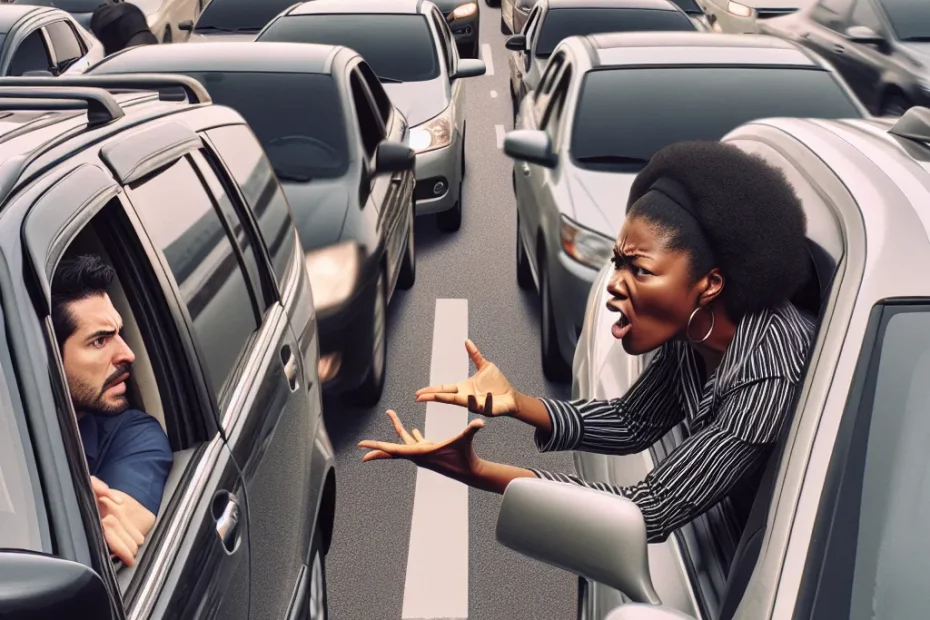In a fast-paced society like Korea, road rage incidents are not uncommon. Understanding the root causes of aggressive driving behavior is crucial in order to effectively address and prevent such situations. By exploring the common triggers for road rage and providing practical tips for de-escalating tense moments on the road, we can promote safer and more harmonious driving experiences for everyone. Additionally, being aware of the legal consequences of road rage in Korea serves as a deterrent, emphasizing the importance of maintaining composure and respect while navigating the streets. Let’s delve into this important topic and learn how to handle aggressive drivers on Korean roads.

Understanding Road Rage in Korea
Road rage is a serious issue that affects drivers worldwide, and Korea is no exception. In fact, Korea has one of the highest rates of road rage incidents in the world, with aggressive driving behaviors often leading to dangerous situations on the roads. Understanding the root causes of road rage in Korea is crucial in addressing this problem effectively.
Factors Contributing to Road Rage
One of the main factors contributing to road rage in Korea is the high population density and heavy traffic congestion. With so many vehicles on the road and limited space to maneuver, drivers often feel frustrated and stressed, leading to aggressive behaviors behind the wheel. In addition, long commuting hours and tight schedules can further exacerbate these feelings of frustration, making drivers more prone to road rage outbursts.
According to recent studies, nearly 80% of Korean drivers have experienced or witnessed road rage incidents on the roads. This alarming statistic highlights the urgent need for measures to address this issue and promote safer driving habits. From excessive honking and tailgating to verbal confrontations and even physical altercations, road rage can escalate quickly and result in serious consequences for all parties involved.
Handling Road Rage
To handle aggressive drivers on the roads in Korea, it is important to remain calm and avoid engaging in confrontations. Defensive driving techniques, such as maintaining a safe following distance and refraining from aggressive maneuvers, can help prevent road rage incidents from escalating. It is also essential to report any aggressive driving behavior to the authorities and seek help if you feel threatened or unsafe on the roads.
In conclusion, road rage is a significant problem in Korea that requires immediate attention and action. By understanding the root causes of road rage and adopting safe driving practices, we can work towards creating a safer and more harmonious driving environment for everyone on the roads. Remember, safety always comes first when behind the wheel, so stay alert, stay calm, and drive responsibly. Let’s make our roads safer for all! 🚗🛣️
Common Triggers for Aggressive Driving
In the fast-paced world of driving, it’s no surprise that certain triggers can lead to aggressive behavior on the road. Understanding these common triggers can help us navigate the streets with caution and empathy. Let’s delve into some of the key factors that contribute to aggressive driving behavior.
1. Traffic Congestion 🚗🚙🚛
One of the most prevalent triggers for road rage is traffic congestion. Being stuck in a long line of vehicles can test even the most patient drivers. The frustration of being unable to move freely can escalate emotions and lead to aggressive driving behaviors such as tailgating, honking, and weaving in and out of lanes.
2. Running Late ⏰
Time pressure is another significant trigger for aggressive driving. When individuals are running late for appointments or deadlines, they may feel a heightened sense of urgency on the road. This urgency can result in risky maneuvers, speeding, and aggressive overtaking to make up for lost time.
3. Disregard for Traffic Laws 🚦
Drivers who exhibit a disregard for traffic laws can provoke aggression in others. Whether it’s running red lights, not using turn signals, or speeding in residential areas, such behaviors can trigger frustration and anger in law-abiding drivers.
4. Personal Stress and Anger 😡
Personal stress and anger from external factors can spill over onto the road. Drivers who are already feeling tense or upset due to personal issues may be more prone to reacting aggressively to minor inconveniences on the road.
5. Competitiveness 🏁
Some drivers view the road as a competitive arena where they must assert their dominance. This competitive mindset can lead to aggressive behaviors such as racing other vehicles, refusing to yield, and engaging in dangerous maneuvers to “win” on the road.
By recognizing these common triggers for aggressive driving, we can take proactive steps to manage our emotions behind the wheel. Remember, staying calm, practicing patience, and showing empathy towards other drivers can help create a safer and more harmonious driving environment for everyone on the road. Drive safe, stay calm, and arrive at your destination without letting road rage take the wheel!
Tips for De-escalating Road Rage Situations
In the fast-paced world of driving, encountering aggressive drivers is almost inevitable. Road rage incidents can escalate quickly, putting everyone on the road at risk. As a responsible driver, it is crucial to know how to handle such situations with composure and tact. Here are some expert tips to help you de-escalate road rage situations and ensure a safer driving experience for yourself and others on the road! 🚗💢
1. Stay Calm and Avoid Eye Contact:
When faced with an aggressive driver, the first and most important step is to remain calm. Avoid making eye contact or engaging in any aggressive gestures, as these actions can further provoke the other driver.
2. Give Space and Maintain Distance:
If you notice a driver exhibiting signs of road rage, such as tailgating or aggressive lane changes, give them plenty of space. Maintain a safe distance between your vehicle and the aggressive driver to avoid any potential confrontations.
3. Do Not Respond to Aggression:
It can be tempting to react to aggressive behavior with aggression of your own, but this will only escalate the situation. Instead, focus on your own driving and do not respond to any provocation from the other driver.
4. Use Signals and Communicate Clearly:
Clear communication is key in preventing misunderstandings on the road. Use your turn signals, hand gestures, and hazard lights to communicate your intentions to other drivers, including those who may be exhibiting road rage.
5. Pull Over Safely if Necessary:
If you feel threatened or unsafe due to the actions of an aggressive driver, find a safe place to pull over and allow them to pass. Do not engage with the aggressive driver, and wait until they are at a safe distance before continuing on your journey.
6. Report Aggressive Driving:
If you witness dangerous or aggressive driving behavior, consider reporting it to the authorities. Many regions have hotlines or online platforms where you can report reckless driving, helping to keep the roads safer for everyone.
By following these expert tips, you can effectively de-escalate road rage situations and ensure a safer driving environment for yourself and others. Remember, staying calm and focused behind the wheel is key to navigating challenging driving situations with confidence and professionalism! 🛣️🚦
Legal Consequences of Road Rage in Korea
Road rage is a serious issue that can lead to severe legal consequences in Korea. In recent years, the Korean government has implemented strict laws and regulations to combat aggressive driving behavior on the roads. Drivers who engage in road rage may face hefty fines, license suspension, or even imprisonment, depending on the severity of their actions.
Increasing Number of Road Rage Incidents
According to recent statistics, the number of road rage incidents in Korea has been on the rise, with a significant increase in cases involving physical violence and property damage. In 2020 alone, there were over 5,000 reported cases of road rage, resulting in numerous injuries and fatalities.
Under Korean law, aggressive driving behaviors such as tailgating, excessive honking, and verbal threats are considered serious offenses. Drivers who are found guilty of road rage may be fined up to 20 million KRW (approximately $17,000) and have their driver’s license suspended for a certain period. In more severe cases where physical violence or significant property damage is involved, the driver may face criminal charges and imprisonment for up to three years.
It is essential for drivers in Korea to remain calm and composed while on the road, regardless of the actions of other motorists. Engaging in road rage not only puts oneself at risk of legal consequences but also endangers the safety of other road users. By following traffic laws and practicing patience and courtesy, drivers can help prevent road rage incidents and contribute to a safer driving environment for everyone.
In conclusion, road rage in Korea can have serious legal implications, including hefty fines, license suspension, and even imprisonment. It is crucial for drivers to prioritize safety and respect on the roads to avoid falling into the trap of aggressive driving behavior. Remember, staying calm behind the wheel can not only save lives but also protect you from the legal repercussions of road rage. Drive safely and responsibly! 🚗🚦🛣️
In conclusion, it is crucial for drivers in Korea to understand the root causes of road rage, such as stress and frustration, and to actively work on de-escalating tense situations on the road. By remaining calm, avoiding confrontation, and practicing empathy, drivers can contribute to a safer and more harmonious driving environment for everyone. Remember, road rage not only poses a danger to oneself and others but also carries serious legal consequences. Let’s strive to cultivate a culture of patience and respect on the roads to ensure a smoother and more pleasant driving experience for all.
